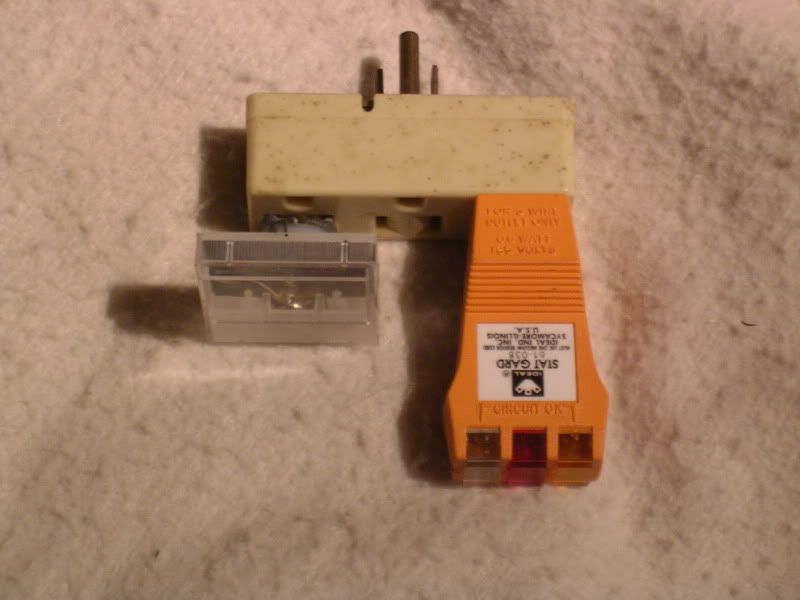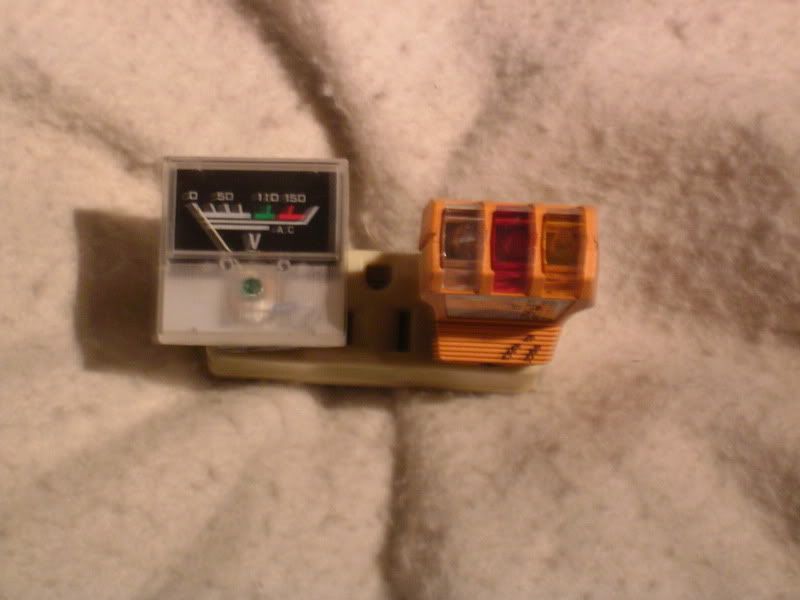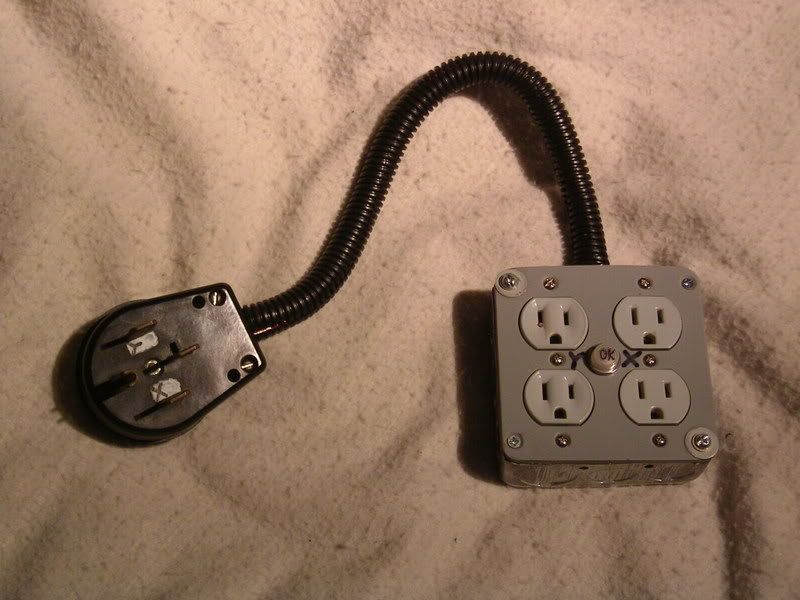Go to...  | Start A New Topic  | Search  | Notify  | Tools  | Reply To This Topic  |  |
| "First Year of Inception" Membership Club |
For years Carol and I have used our old Barth in areas where there was no electrical plug connections. We never had a problem since we just used the coach battery. On the way home with the new Barth we stayed at commercial sites with full hook ups. We stopped at a camp ground in Montana and I used the 20 Amp service. The ground fualt circut in the coach popped and would not reset. I have this device that I use to show that there is electrical service on in the unit. I should have used it to plug in the supply for the campsite. It was wired wrong. I told the manager about it and he said that we should just move over to a site that is wired correct. I called this guy yesterday to see if they had done anything about the service and he said that nobody ever uses the 20 Amp service and hadn't gotten around to fixing the problem. He also said that he wasn't an electrician and didn't know anything about wiring. I think that he was right. From now on I will use my little plug in device to make sure that things are wired correct. Lesson learned the hard way. I plan on finding another Square D 15 Amp breaker and installing a GFI in the bathroom. I think that the outside plug-ins should be GFI also. I will check and see what plugs are protected after I wire the bathroom. | ||
|
| She who must be obeyed and me, Ensign 3rd crass "5+ Years of Active Membership" |
Dennis: Thank you, good post. Timothy | |||
|
Dennis, would you give us some details on exactly what your "little plug in device" is? I think I want one.....Bill ------------------ ]http://banners.wunderground.com/banner/gizmotimetempbig_both/language/www/US/MO/Macks_Creek.gi[/img]  Bill & Diane 1973 25' 454 CID P-30 Chassis German Shepard Dog | ||||
|
| "First Year of Inception" Membership Club |
I bought the tester at Home Depot. Electricions use them to make sure that the plug-ins are wired right. It shows when you have the neutral and the hot wire backwards and if you have the ground wired right. They only cost a couple bucks and save a lot of wondering if you wired the plug-in the way it should be. | |||
|
| First Month Member |
The tester Dennis mentions is indeed good for testing the 20 amp house-type outlets. Here is a link to a site with a picture of it: http://www.radioshack.com/product.asp?cookie%5Ftes t=1&catalog_name=CTLG&category_name=CTLG_011_008_003_000&product_id=22-141 To test a 3 prong 30 amp RV outlet, you plug in THIS: http://www.camperschoice.com/cgi-bin/more_info.pl?order...st_id=&group_id=2378 and then plug the house outlet tester. A meter or test light can also be used. You can assemble an all in one 30 amp tester by combining a meter and a neon tester plugged in to an outlet multiplier which is plugged into a 20/30 adapter.   To check a 50 amp RV outlet, you gotta make your own plug-in tester or use a meter or 110V-220V test light. Instructions on request. | |||
|
 4/08 4/08"5+ Years of Active Membership" |
Bill, I typically use the 30 or 50 amp connections at the campground. I would like instructions on how to test both circuits. Your advise would be appreciated. Thanks, Bill Goodwin | |||
|
| First Month Member |
The plug in tester and adapter method described above is so simple and fool proof that I recommend it over a meter for 20 and 30 amp testing. The 14-50R 50 amp outlet can be checked with a voltmeter. There are two straight slots parallel with each other and opposite each other, usually at 3 and 9 o’clock. They are “hot”. There is a “U” shaped hole that is usually at 12 o’clock. It is "Ground", and is zero potential. There is a straight slot opposite the U shaped hole, usually at 6 o’clock. It is “Neutral”, and is also at zero potential. Voltage readings: Hot to ground=110-125 volts Hot to neutral=110-125 volts (both should be the same) Neutral to ground=0 volts Hot to Hot= 220–240 volts A 220 volt lamp in a homemade test light can also be used. If it is bright, it is 220, dim is 110. A plug in tester can also be made using a 50 amp plug with a 220 volt bulb reading hot to hot, and 110 volt bulbs reading the rest. Dye the bulbs for hot to hot, both hots to ground, and both hots to neutral green. Dye the neutral to ground red. All greens should illuminate and the red should not. This hot to hot reading is important. Some shady campground operators have wired their 50 amp receptacles so that the hot to hot reading is 0 volts. Things will work, but you could fry a wire at an inconvenient location or start a fire. The two hot poles need to be 180 degrees out of phase with each other to avoid the possibility of an overloaded neutral wire. When corrected properly, the neutral wire carries the difference between the currents in each hot wire. When the hots are connected incorrectly, the neutral wire carries the SUM of the currents, which could be an overload. And since neutral wires are not protected by a breaker, the overload continues until meltdown. Having said all that, the overload mentioned is most likely to occur when the rear air conditioner is operated. So, one could take a chance and connect to an improperly wired 50 amp outlet and not draw too much current from the second hot leg. My own preference would be to operate only one hot leg by shutting the other one off with the breaker on the post. Try each breaker and you will know which one powers the circuits you want. However, those type hookups often have 30 amp wiring, so don't operate too many appliances at once. Another type of 50A tester can be cobbled up from whatever you have on hand or can find at the store:   One outlet pair is connected to one hot leg, and the other to the other. Both meters should read 120 volts, both testers should have the proper pattern of lights, and the center "OK" light should be illuminated. | |||
|
 4/08 4/08"5+ Years of Active Membership" |
Bill, Thanks, your post(as always)is informative and useful. I carry a volt meter with me in my Barth. What I need to do now is remember to check to current before I connect. Since purchasing the coach, I have simply been plugging in without checking. Now I have conditioned my self to do so and must re learn the new procedure. Bill Goodwin | |||
|
| Powered by Social Strata |
| Please Wait. Your request is being processed... |
|
This website is dedicated to the Barth Custom Coach, their owners and those who admire this American made, quality crafted, motor coach.
We are committed to the history, preservation and restoration of the Barth Custom Coach.
We are committed to the history, preservation and restoration of the Barth Custom Coach.

